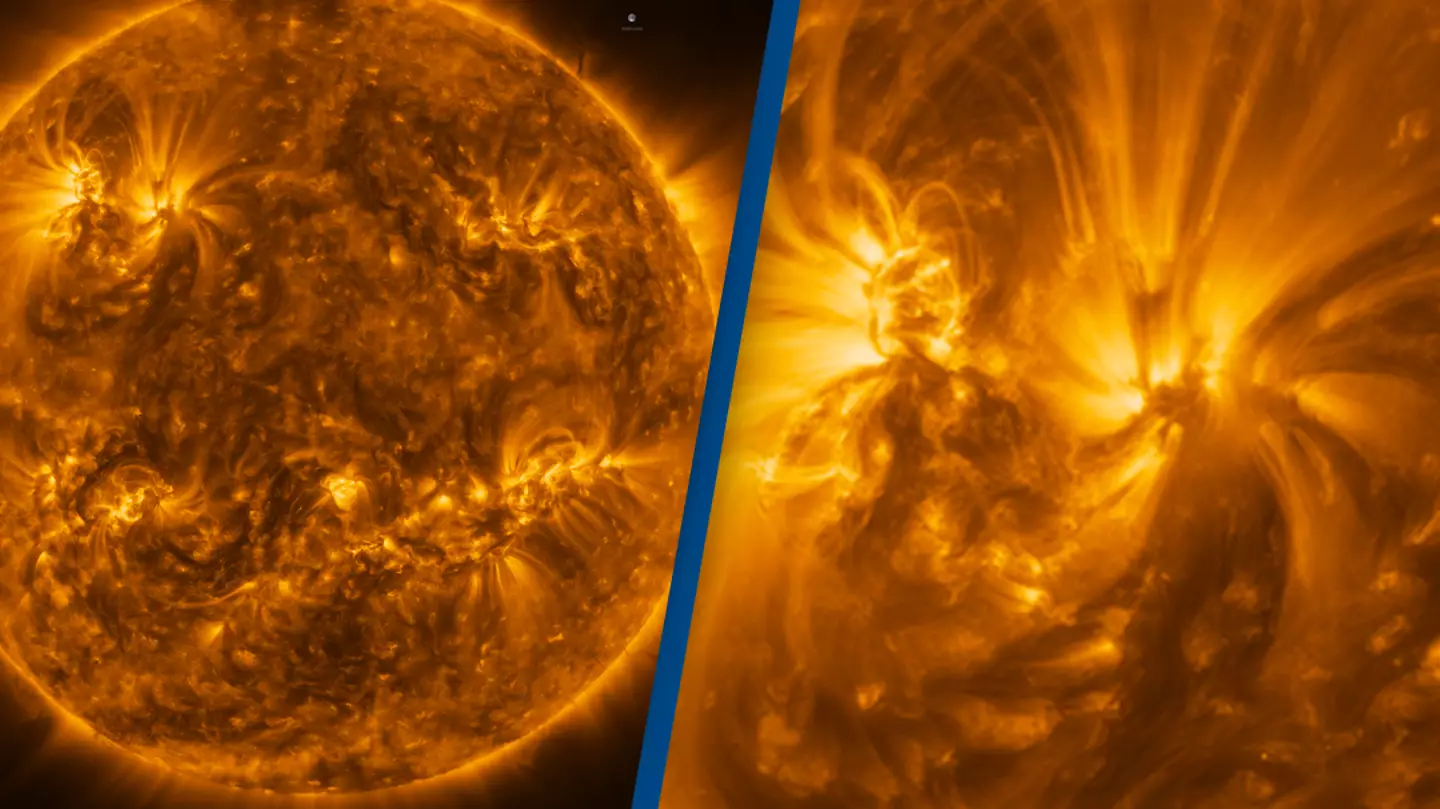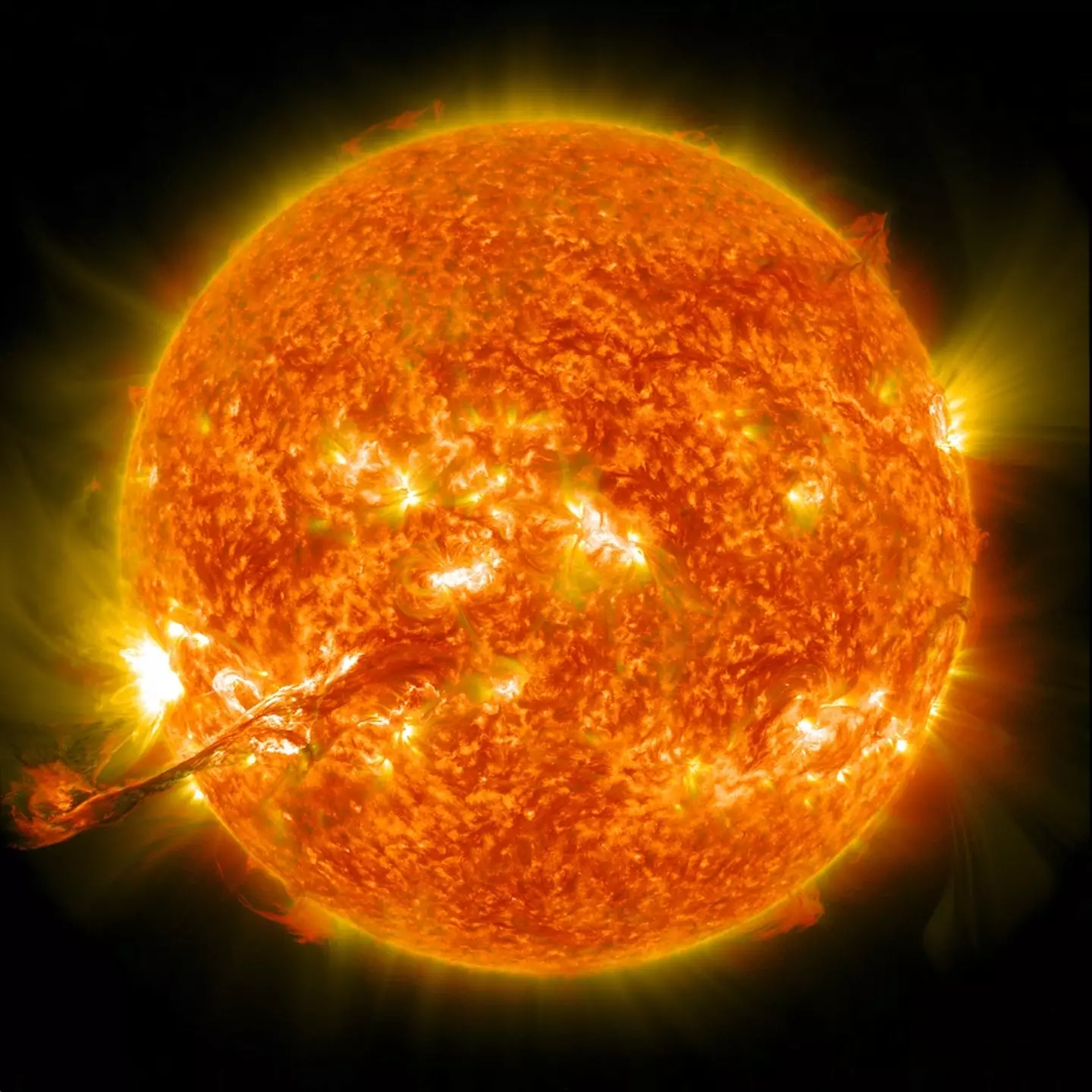
Topics: Climate Change, Space, Technology, Science
A remarkable close-up image of the sun has been captured by the European Space Agency's Solar Orbiter.
The sophisticated spacecraft, specifically designed to observe the sun from a very close range, has managed to photograph the star as you've never seen it before.
One of the astounding aspects of the picture that you may not register at first is that earth is visible in the shot. As you can see from the tweet below, the tiny ray of light in the top right corner is actually our home – planet Earth.
The Solar Orbiter probe is believed to have been halfway between Earth and the sun when it captured the image.
The result is a 9,148 by 9,112 pixel extravaganza, which equates to 83 million pixels of solar magnificence.
Advert
What we see above is in fact a stitched-together picture compiled from 25 individual shots of the sun, to add even more detail.
It's thought the Solar Orbiter's Ultraviolet Imager instrument could lead to to some groundbreaking scientific discoveries in the future.
According to the ESA, it will help them understand the nature of eruptions on the surface of the sun, and how they are related to changes deeper down in the solar atmosphere.
The significance of this shouldn't be overlooked, as solar eruptions, when in the direction of Earth, can result in technology-disrupting geomagnetic storms.
Advert

The Orbiter first launched back in February 2020, and will end up swooping in close to the sun at least 19 times overall.
A few days ago, 26 March, it managed to get to within 48 million kilometres of the star, which will have allowed the probe to collect a great deal of data pertaining to solar poles and solar wind.
Next year, it is set to veer even closer to the sun, which should result in even more spectacular images.
Advert
If you have a story you want to tell, send it to UNILAD via [email protected]